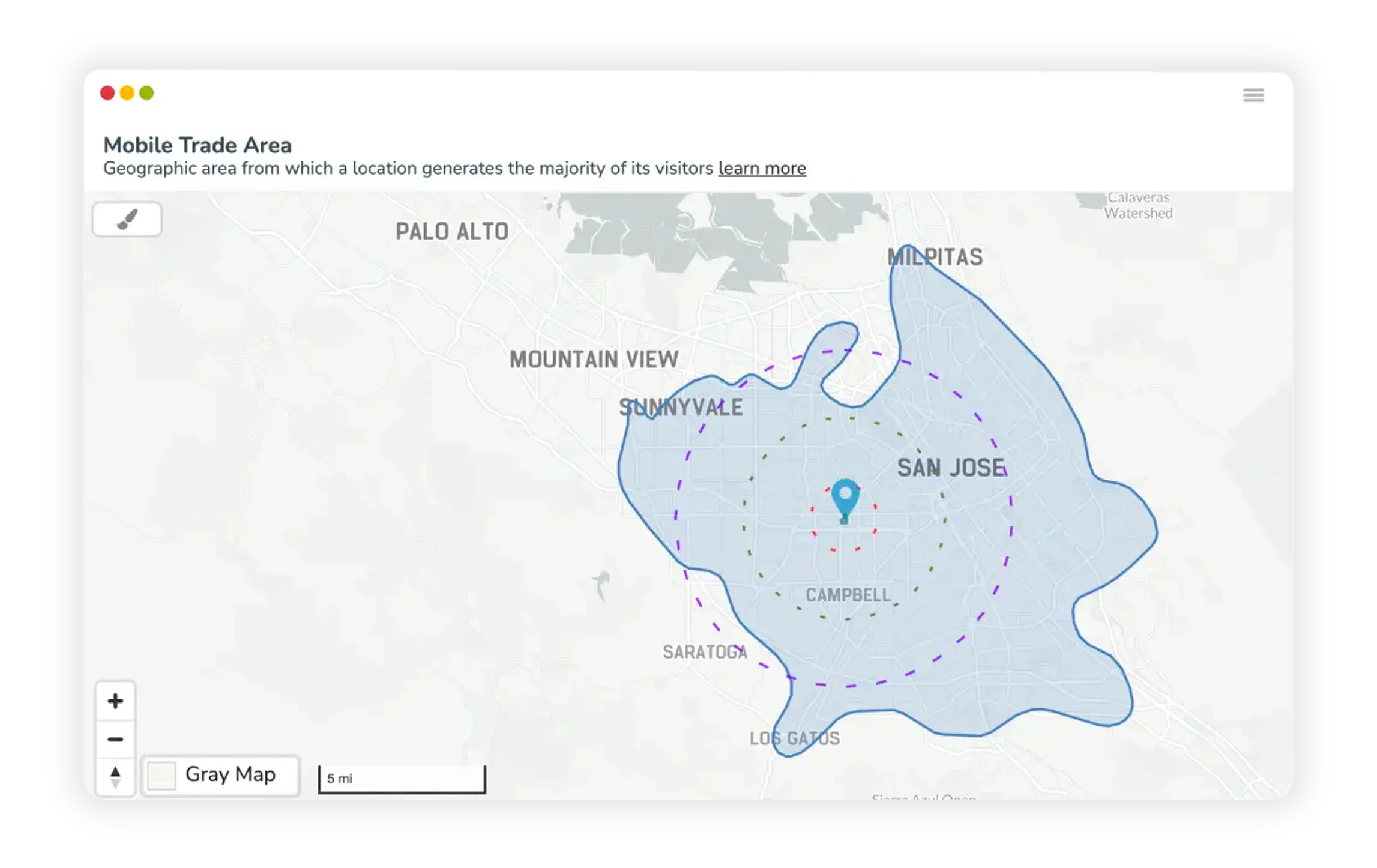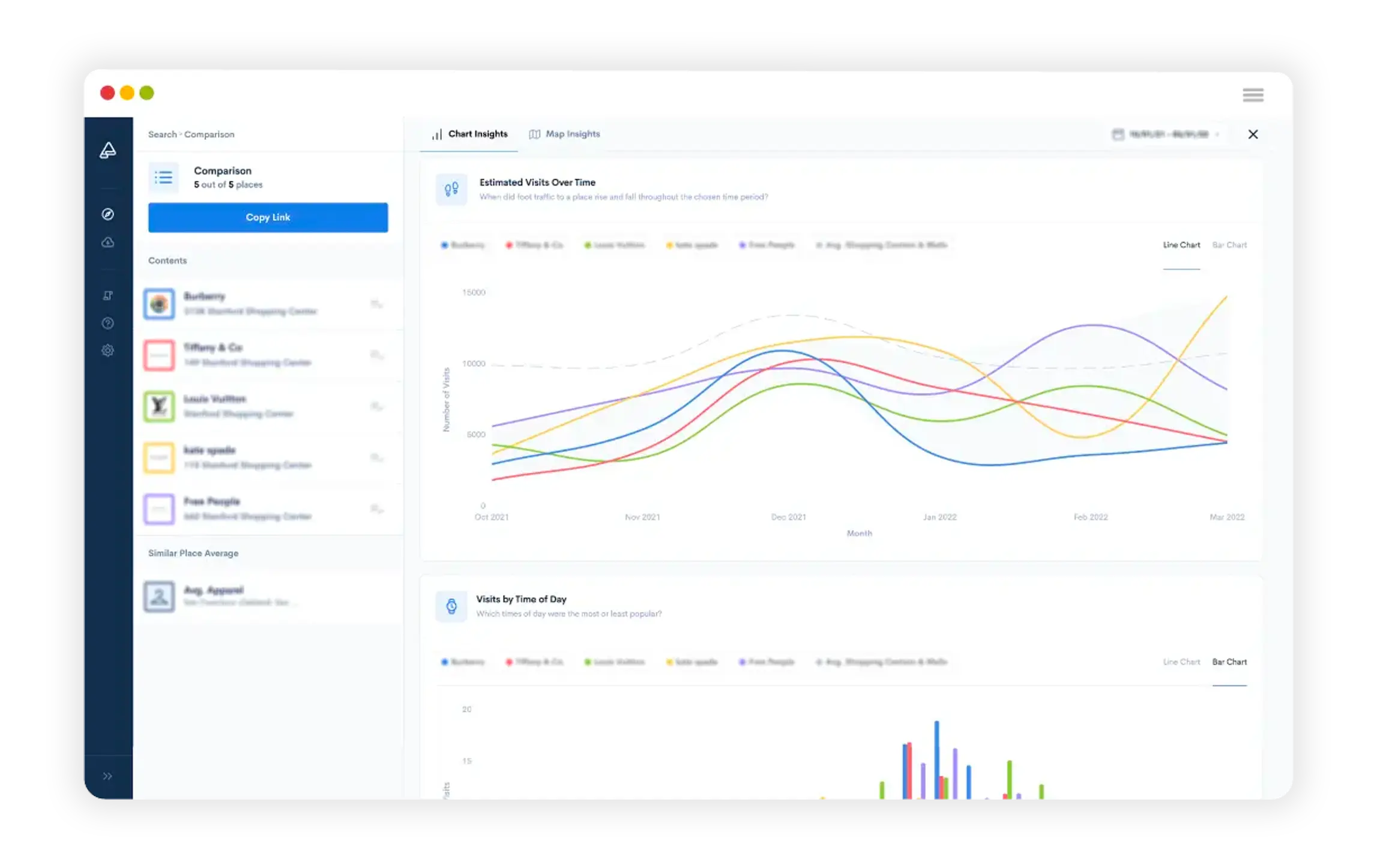In today’s competitive consumer behavior landscape, decision-making comes with risk and uncertainty. Insights from consumer behavior data enabled by location intelligence can be incredibly useful in reducing risk and enabling better decisions. Trade area analysis can equip operations leaders with valuable insights into their customer base and potential market areas.
Using trade area analysis, operations leaders can answer critical questions such as choosing between expansion or consolidation, understanding the overlap between existing and new locations, and more. Businesses can even assess competitor sites and analyze multiple sites at once to understand where a new location will have the greatest draw.
In this short guide, we look at what trade area analysis is, how it is measured, what data is used for it, and the benefits it offers for business operations.
What Is Trade Area Analysis?
Trade area analysis is the process of identifying and assessing locations from which a business could draw its customers. This analysis can help businesses gain insight into consumer behavior such as demographics, preferences, and buying habits of existing customers. This information can also be used to assess competitor brands, identify areas of opportunities for expansion or modify existing audience targeting strategies.
Trade area analysis can enable businesses to answer key questions like:
- How far consumers are willing to travel to reach their store/restaurant
- How opening a new location might impact existing locations in the area
- How far consumers travel to competitor locations in the area, and more
These critical insights can help teams optimize strategies and resource allocation to enable growth and success.
How Is Trade Area Measured?
At Azira, trade area analysis is enabled using anonymized and privacy-safe consumer behavior and mobile location data. This provides accurate insights into the commercial reach of the business, consumer behavior, movement patterns, and more. Another method used is measuring the geographical area that customers can travel within a specified amount of time. This method is used by operations leaders to determine their immediate reach and potential customer base.

Apart from consumer behavior data, trade area analysis relies on a diverse range of data sources to provide insights into commercial reach and consumer behavior. This includes foot traffic data which can help businesses identify high-traffic areas and potential opportunities for expansion or when assessing multiple sites for expansion. Data on competitor locations can also be used for trade area analysis to understand the performance of competitors and consumers visiting competitor locations.
Benefits of Trade Area Analysis
Trade area analysis can help operations leaders better understand visitors to their store and existing customers to enable better marketing and operations decision-making. With specific and precise insights focused on target locations, businesses can answer key questions around:
- Visitation patterns: Visualize visitation patterns of visitors to your store and know how far they travel, identify congestion points, and more. These insights can inform operational decision-making such as store locations and marketing strategies.
- Commute patterns: Use commute patterns to understand the travel routes of your customers and answer key questions such as whether they visit your store/restaurant before or after work, or how far they are willing to travel to access your store. These insights can inform marketing strategies, as well. For example, if you find that the regular lunch crowd at your restaurant is from offices nearby, you can attract more customers with special offers for office-goers.
- Precise targeting: Identify the precise geographic locations where your customers frequent to optimize audience targeting and marketing messaging for enhanced customer experience and engagement.
- True trade area: Determine the precise reach of a location based on where your customers frequent. Analyze multiple sites to determine the ideal site for your next store or restaurant.
- Cannibalization analysis: Know the impact of new store or restaurant locations in the same area on older locations and the overlap of trade areas between the two locations. If you already have two locations in the same neighborhood, track performance and understand visitation patterns to both locations.

Azira’s Trade Area Analysis Solution
Powered by privacy-safe and high quality consumer behavior data, Azira’s trade area analysis solution enables you to instantly unlock insights on any trade area, shopping center, or other location. Visualize insights and share them easily with stakeholders.
Using Azira’s Global Consumer Insights Platform, you can get insights into foot traffic by day of the week or time of the day, understand the demographics of visitors, and more. You can also analyze multiple sites at once and choose the right location for expansion based on the demographics, visitation trends, and market reach.
Trade area analysis is a vital tool for businesses seeking to understand their customer base, optimize their marketing and operations efforts and capitalize on untapped business opportunities.
Interested in what insights and business opportunities trade area analysis can uncover for operations leaders? Contact us today.




